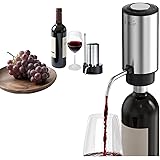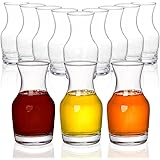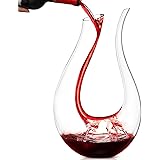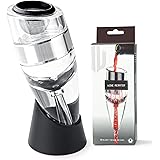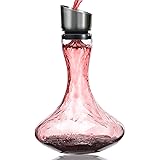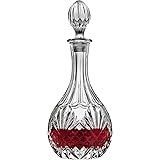Welcome, connoisseur of fine wines and culinary arts. Have you ever wondered what truly underpins a successful wine and food pairing, extending beyond mere personal preference into a realm of understood principles? This detailed guide builds upon the foundational insights shared in the video above, delving deeper into the intricate dynamics that govern the interaction between gastronomic elements and exceptional wines. For those embarking on the rigorous WSET Level 3 curriculum or simply seeking to refine their sensory acumen, comprehending these concepts is paramount to mastering the art of thoughtful pairing.
The journey into perfect wine and food harmony is inherently subjective, deeply influenced by individual sensitivities and specific environmental contexts. While some argue that an empirical, one-size-fits-all solution remains elusive, a comprehensive understanding of how food components influence a wine’s perceived balance allows for educated recommendations. Expert palates often gravitate towards wines that present as fruitier, less acidic, and notably less bitter or astringent when partnered with dishes. This article systematically dissects these interactions, providing a robust framework for making judicious wine and food pairing choices.
Deconstructing High-Risk Food Pairings: Navigating Potential Pitfalls
Certain culinary elements pose significant challenges to a wine’s profile, often leading to undesirable sensory experiences. Identifying these “high-risk” foods is the first critical step in mitigating potential pairing catastrophes and ensuring optimal enjoyment for discerning palates.
The Pervasive Influence of Sugar in Gastronomy
Dishes abundant in sugar, such as a rich crème brûlée, present a formidable obstacle for most dry wines. The fundamental principle dictates that the chosen wine must possess an equivalent or greater level of sweetness than the accompanying dish. Failing to adhere to this crucial guideline results in the wine appearing remarkably thin, excessively acidic, and stripped of its inherent fruit character. Empirical data suggest that even a slight imbalance in residual sugar content can dramatically alter the perception of a wine’s structure, often rendering it sharp and unpleasantly austere.
The prevailing contemporary preference for drier wines across many dining establishments inadvertently limits the availability of suitable sweet wine options. Consequently, meticulous selection is required to avoid reducing an exquisite dessert wine to a mere shadow of its potential. Consider a late-harvest Riesling or a fortified wine like Port, whose concentrated sugars and balanced acidity can stand up to, and even elevate, the sweetness of a dessert.
Umami: The Fifth Taste and Its Tannic Challenge
Umami, frequently described as a savory, brothy, or meaty taste, significantly amplifies the perception of astringency and bitterness in wines, particularly those with pronounced tannic structures. Ingredients rich in umami include mushrooms, aged cheeses, tomatoes, and cured meats. When paired improperly, a wine’s delicate fruit flavors can recede, leaving behind a harsh, drying sensation on the palate.
To counteract this effect, a chosen wine must possess ample concentrated fruit flavors and a robust, integrated structure capable of absorbing the umami impact. For instance, a mushroom risotto, a classic umami-laden dish, demands a wine with substantial fruit and perhaps a softer tannic profile, such as a mature Pinot Noir or an aromatic Nebbiolo with sufficient age to soften its formidable tannins. The fruit concentration acts as a buffer, preserving the wine’s intrinsic charm.
The Bitterness Equation: Artichokes and Beyond
Bitter components in food, exemplified by the potent cynarin found in artichokes, pose a direct challenge by intensifying any bitterness present in the wine. This interaction can exacerbate tannic grip and woody notes derived from oak aging or grape skins. Scientific studies illustrate that specific phenolic compounds in bitter foods can bind with and accentuate similar compounds in wine, creating an overwhelming and often unpleasant sensation.
Therefore, pairing bitter foods necessitates a strategic selection of white wines or red wines characterized by exceptionally low tannin levels. A crisp Sauvignon Blanc or a light-bodied, unoaked Gamay from Beaujolais offers a safer alternative, preventing the amplification of bitterness that might otherwise spoil the wine’s balance. The objective is to select wines whose structural components are less prone to being overwhelmed by bitter food elements.
Chili Heat: A Personal Threshold
Dishes exhibiting significant chili heat present a nuanced pairing challenge, highly contingent on individual tolerance and preference. Capsaicin, the active compound in chili peppers, interacts with pain receptors on the palate, and its effect is often amplified by alcohol. Consequently, high-alcohol red wines can seem excessively fiery when paired with spicy dishes, creating an unbalanced and even uncomfortable experience for many.
Effective pairings for chili-laden foods typically involve white wines, ideally those with a discernible sweetness or robust fruit character, or low-tannin reds. A wine’s fruitiness and sweetness can be attenuated by chili heat; therefore, selecting wines with high concentrations of these components is crucial to mitigate the severity of the effect. Beaujolais, with its bright fruit and gentle tannins, or an off-dry German Riesling, are exemplary choices that offer a refreshing counterpoint and help to soothe the palate.
Embracing Low-Risk Food Pairings: Reliable Culinary Companions
While some foods present inherent pairing complexities, others tend to be more forgiving, acting as versatile partners for a wide array of wines. Understanding these “low-risk” foods can simplify menu planning and ensure consistent pairing success.
The Harmonious Duo of Salt and Acidity
Foods distinguished by high levels of salt and/or acidity generally offer a welcoming embrace to wine, softening its perceived acidity and enhancing its fruitiness. A Peruvian ceviche, marinated in citrus juices and seasoned with salt, exemplifies this phenomenon. The vibrant acidity of the dish effectively tempers the acidity in a high-acid white wine, allowing its nuanced fruit and structural roundness to emerge more prominently, often making the wine seem slightly sweeter.
However, a critical caveat exists: high-acid foods demand high-acid wines. Pairing a highly acidic dish with a medium to low-acidity wine will strip the wine of its vivacity, rendering it flat and uninspired. For a dish like ceviche, a bright Muscadet or a sharp Albariño maintains the wine’s structural integrity, ensuring a harmonious and invigorating sensory experience that highlights both the food and the beverage.
Navigating High-Risk Wines: A Connoisseur’s Challenge
Just as certain foods pose challenges, some wines possess inherent structural components that complicate pairing endeavors. These “high-risk” wines, while often magnificent on their own, demand careful consideration to unlock their full potential alongside food.
The Intricacies of Tannin, Acid, and Alcohol
Wines characterized by elevated levels of bitterness and astringency, often derived from robust grape tannins and pronounced oak aging, coupled with high acidity and significant alcohol content, represent the pinnacle of pairing difficulty. Illustrative examples include a young Nebbiolo from Barolo or a potent Xinomavro from Greece. These wines, celebrated for their complexity and longevity, can overwhelm many dishes, leading to discord rather than harmony.
Achieving a successful pairing with such wines is indeed an art form, requiring meticulous attention to detail. The reward, however, is often spectacular, a synergy where the wine’s formidable structure is tamed and transformed by the food, revealing layers of flavor previously obscured. The objective is to identify dishes whose richness, fat content, or protein structure can soften the wine’s assertive tannins and balance its high acidity, leading to a profound, multi-dimensional taste interaction. A well-marbled Florentine steak, for example, is a classic partner for a robust Brunello di Montalcino, its fat melting to coat the palate and buffer the wine’s powerful tannins.
Discovering Low-Risk Wines: Versatile and Approachable
Conversely, certain wines possess a naturally accommodating profile, making them “low-risk” choices that rarely disappoint, even with less-than-perfect food matches. These wines offer a reliable foundation for everyday enjoyment and exploration.
The Simplicity of Unoaked, Low-Sugar Whites
Simple, unoaked white wines with minimal residual sugar are inherently versatile and unlikely to be rendered unpleasant by a wide array of dishes. Their light flavor profile and refreshing acidity make them broadly agreeable. However, their very simplicity can be a double-edged sword; when paired with overly assertive or complex foods, such as heavily smoked barbecue, their delicate nuances might be completely overshadowed, diminishing the overall sensory experience.
These wines tend to undergo relatively minor changes when paired with food, making the pairing experience less dramatic yet reliably positive. While the transformative “aha!” moment might be less frequent, their consistent ability to complement without competing ensures a pleasant dining experience. A crisp Pinot Grigio or an unpretentious Vinho Verde, for instance, provides a refreshing counterpoint to lighter fare, ensuring a clean and enjoyable palate.
Mastering Classic Pairings: A Blueprint for Success
One of the most effective pedagogical approaches to applying wine and food pairing principles involves deconstructing well-established, classic pairings. Understanding the underlying rationale behind their success provides an invaluable blueprint for identifying other, equally triumphant combinations.
The Enduring Charm of Oysters and Muscadet
Consider the celebrated pairing of fresh oysters with Muscadet. This success story is built upon several critical factors: the Muscadet is typically unoaked, eliminating any bitter components that could clash with the umami-rich oysters. Furthermore, the wine’s light flavor profile prevents it from overwhelming the delicate essence of the oyster. Crucially, Muscadet’s high acidity provides a vibrant, refreshing counterpoint, particularly when oysters are served with a squeeze of lemon and a dash of saline brine.
Once this principle is absorbed, the quest for alternative pairings becomes clear: seek wines that share Muscadet’s characteristics—remarkably high acidity coupled with a delicate flavor profile. An Etna Bianco from Sicily, crafted from local Carricante grapes, or a refreshing Vinho Verde from Portugal, both fit this profile perfectly, offering similar structural advantages. This analytical approach empowers the enthusiast to move beyond rote memorization and embrace a deeper, more adaptable understanding of wine and food pairing principles.
Another classic pairing, Brunello di Montalcino with Bistecca Fiorentina, exemplifies how robust structural components in both wine and food can achieve a powerful synergy. The wine’s formidable tannins and high acidity are expertly met by the steak’s rich fat and protein, creating a balance where neither element dominates. Examining such established pairings, understanding their intricate mechanics, and then applying these insights to novel combinations significantly enhances one’s mastery of wine and food pairing.


